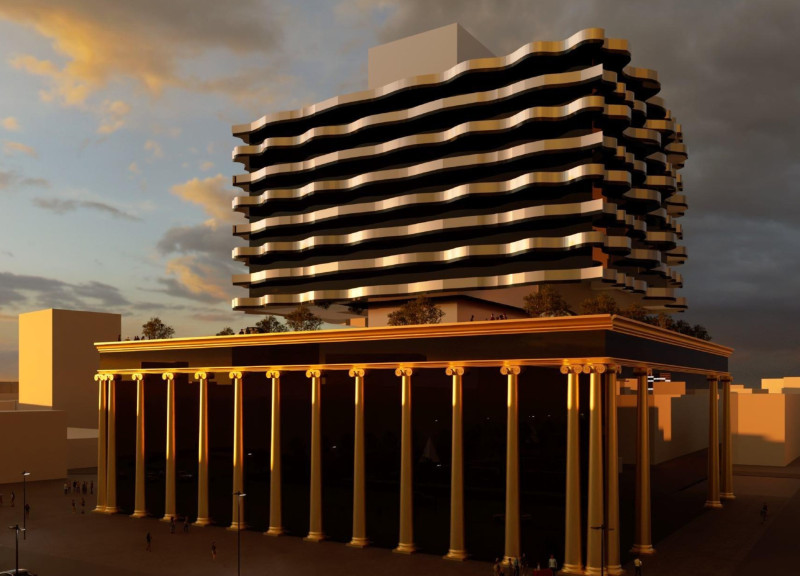5 key facts about this project
The project is situated in a unique geographical location that greatly influences its design approach. By capitalizing on the surrounding landscape, the architecture enhances the natural topography rather than imposing upon it. The thoughtful orientation of the structure allows for maximum natural light, reducing reliance on artificial lighting while fostering a connection to the outdoors. The use of large windows and open spaces invites the landscape into the interior, creating a seamless blend between the indoor and outdoor environments.
Throughout the design, careful consideration has been given to the materials used. A palette dominated by locally-sourced materials connects the project to its surroundings, reinforcing a sense of place. The primary materials include wood, concrete, glass, and stone, each selected for their durability, aesthetic qualities, and environmental performance. The use of wood introduces warmth and texture, while concrete provides structural integrity. Large glass panels minimize barriers between the interior and the exterior, promoting transparency and lightness in the design. Stone elements ground the project, tying it to the natural environment and ensuring longevity in both appearance and performance.
The design embraces a unique approach to functionality, incorporating flexible spaces that adapt to various uses. This versatility is particularly beneficial in contemporary architecture, where the needs of users can change over time. The layout facilitates ease of movement and interaction among occupants, encouraging a sense of community and collaboration. The incorporation of multipurpose areas further enhances the project's utility, allowing for a variety of functions to coexist within the same framework.
One of the standout features of this project is its commitment to sustainability. Beyond efficient use of space and materials, it integrates renewable energy sources, such as solar panels, that contribute to the building's energy independence. Rainwater harvesting systems and green roofs not only reduce water consumption but also promote biodiversity by creating additional habitats for local wildlife. These innovative sustainable measures demonstrate a forward-thinking approach to architectural design, prioritizing environmental stewardship alongside aesthetic and functional considerations.
The project's architectural language is characterized by clean lines and a minimalist approach. This simplicity in design allows the space to breathe, minimizing visual clutter and providing a tranquil environment for occupants. The careful balance of solid and void creates interest and engages the observer, guiding them through the various spaces. This elegant yet understated aesthetic is reflective of contemporary architectural sensibilities, which favor clarity and purpose over unnecessary complexity.
In conclusion, this architectural project makes a significant statement about the role of design in addressing modern challenges. Its thoughtful responses to location, materiality, functionality, and sustainability highlight how architecture can contribute positively to both individual and communal experiences. Readers are encouraged to explore the project presentation further for a more in-depth understanding of its architectural plans, sections, and designs, offering insights that underscore the innovative ideas that have shaped this contemporary space.


 Andriy Zaporozhets
Andriy Zaporozhets 























